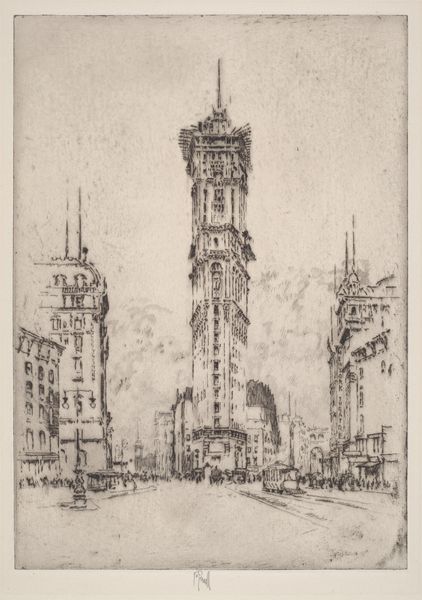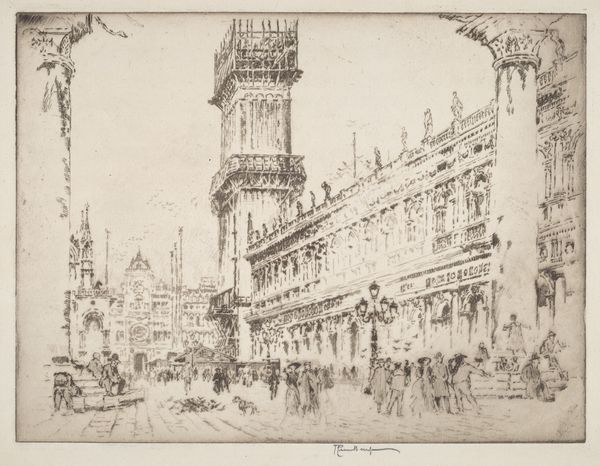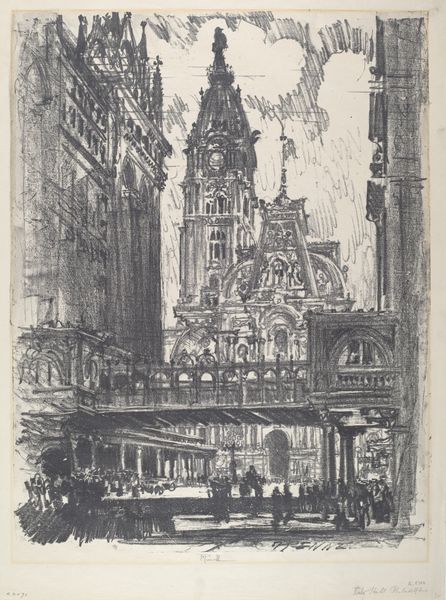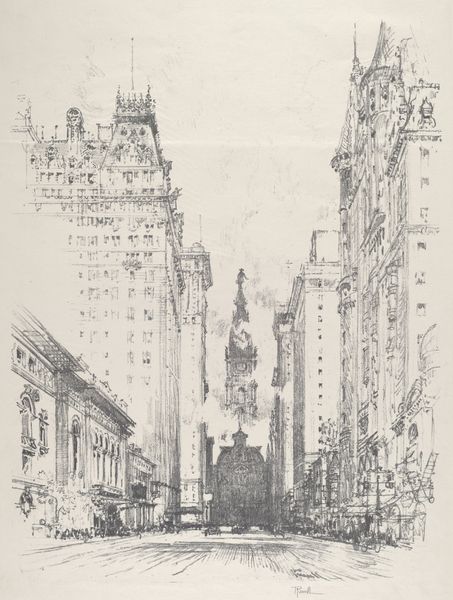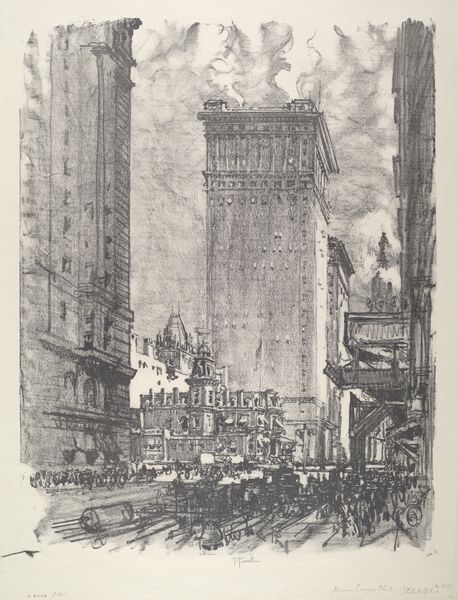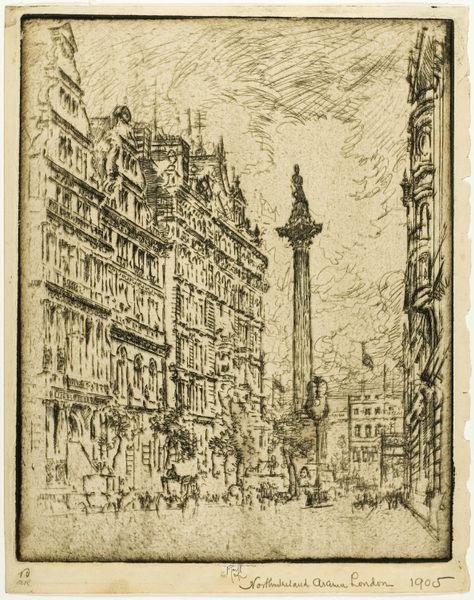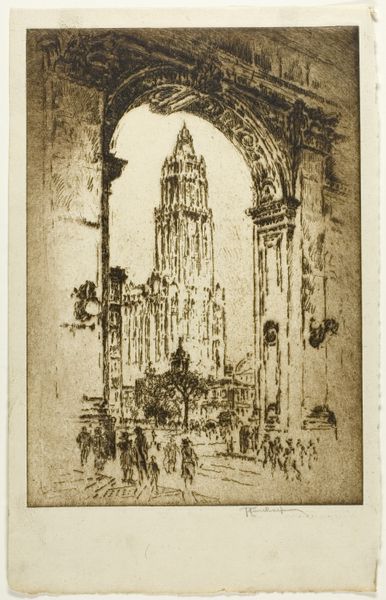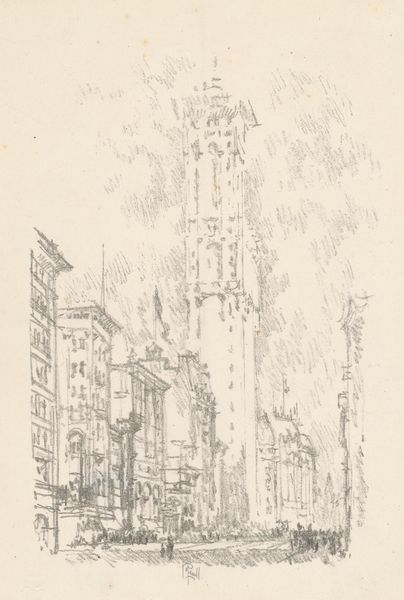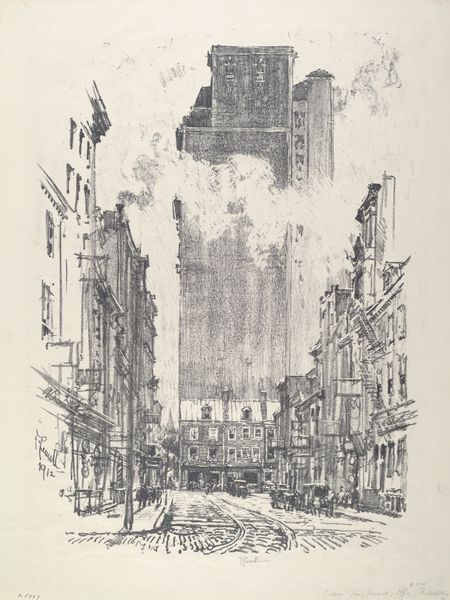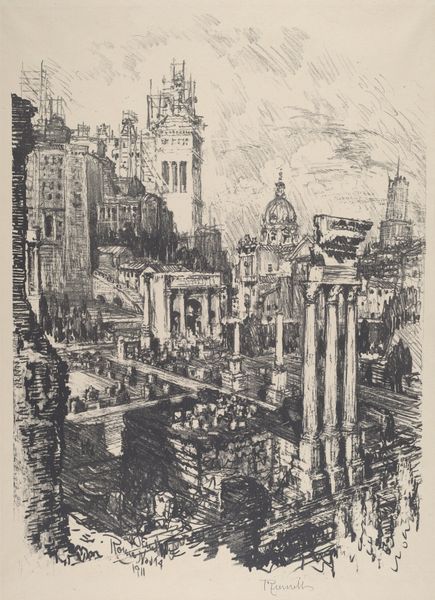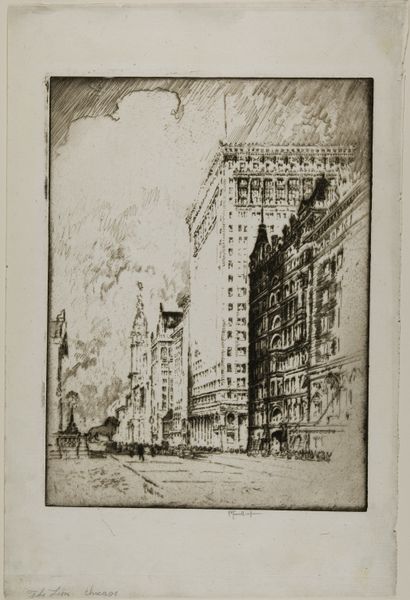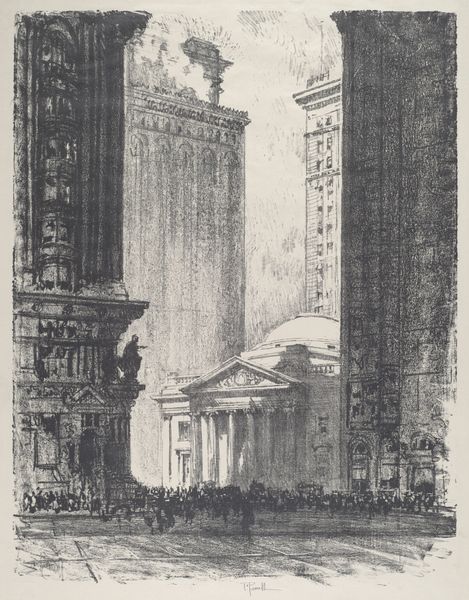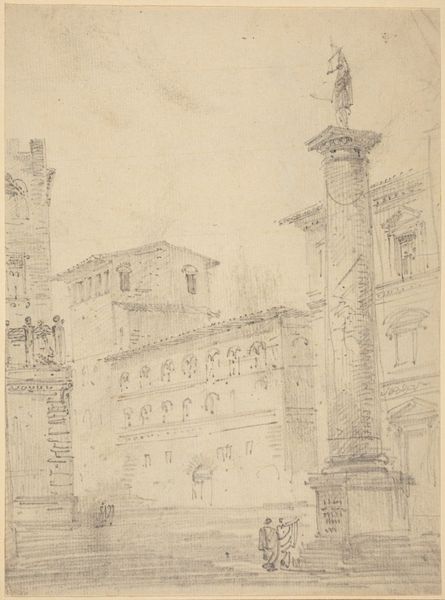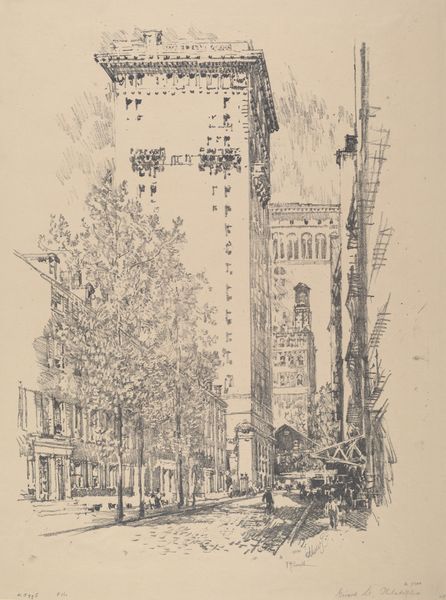
Copyright: National Gallery of Art: CC0 1.0
Editor: So, this is Joseph Pennell’s "Venice, Rebuilding the Campanile," created in 1911. It looks like an etching, capturing a cityscape in Venice. It has a really interesting energy, almost like a bustling construction site frozen in time. What do you see in this piece? Curator: I see a documentation of labor and recovery. Pennell's choice of etching, a reproducible medium, suggests an intention to disseminate this image widely, acting almost as a report. Consider the context: the Campanile collapsed in 1902, and this image captures its reconstruction. It's not just about aesthetic beauty; it is a snapshot of a city grappling with disaster and actively rebuilding its infrastructure. How does the medium contribute to this message? Editor: I guess the print medium makes it feel less like a precious, unique artwork and more like…well, news. The lines are so immediate. It makes me wonder about the actual process of creating this – was Pennell sketching on site, capturing the scene as it unfolded? Curator: Exactly! Consider the physical act of etching – the labor involved in creating the plate, the acid biting into the metal, mirroring the labor of rebuilding the tower. The architectural structure wasn't made out of thin air; it's built with bricks and mortar by workers, men like us. Pennell gives them equal emphasis with those historical columns, by rendering them in meticulous detail. Editor: So it's less about the grandeur of Venice and more about…the *making* of Venice. That's interesting. I hadn't thought about the print medium as a commentary itself, but you're right, it connects to the act of building. Curator: Precisely. It prompts us to think about who built Venice, who maintains it, and how their labor shapes the city. I would wager most people don't dwell on that. Editor: That really changes how I see the image. Now I'm thinking about the unseen labor behind every historical landmark. Curator: Absolutely. Next time you see an artwork, consider not just what is depicted, but how it was made and by whom. This reveals much about its meaning and purpose.
Comments
No comments
Be the first to comment and join the conversation on the ultimate creative platform.
